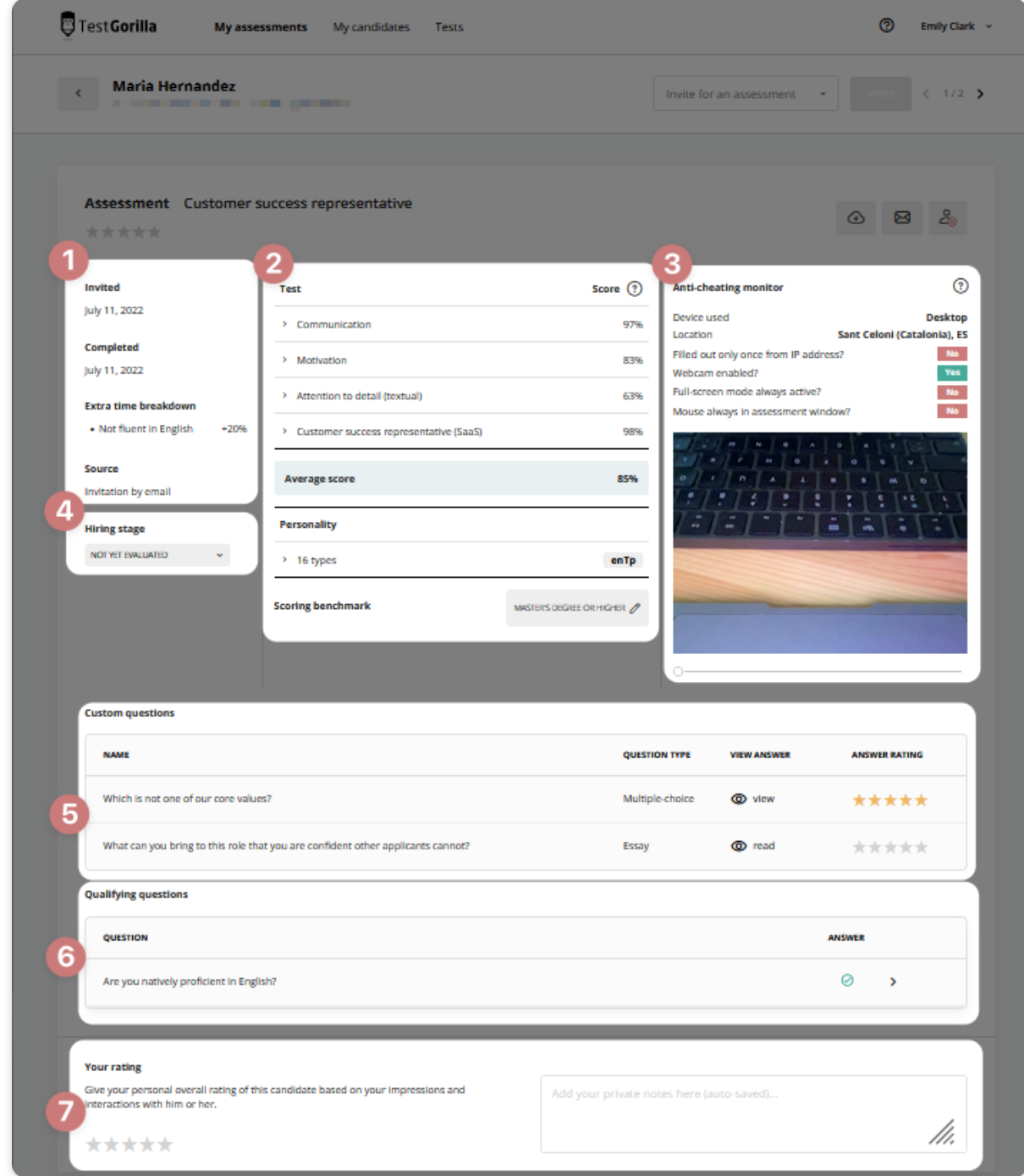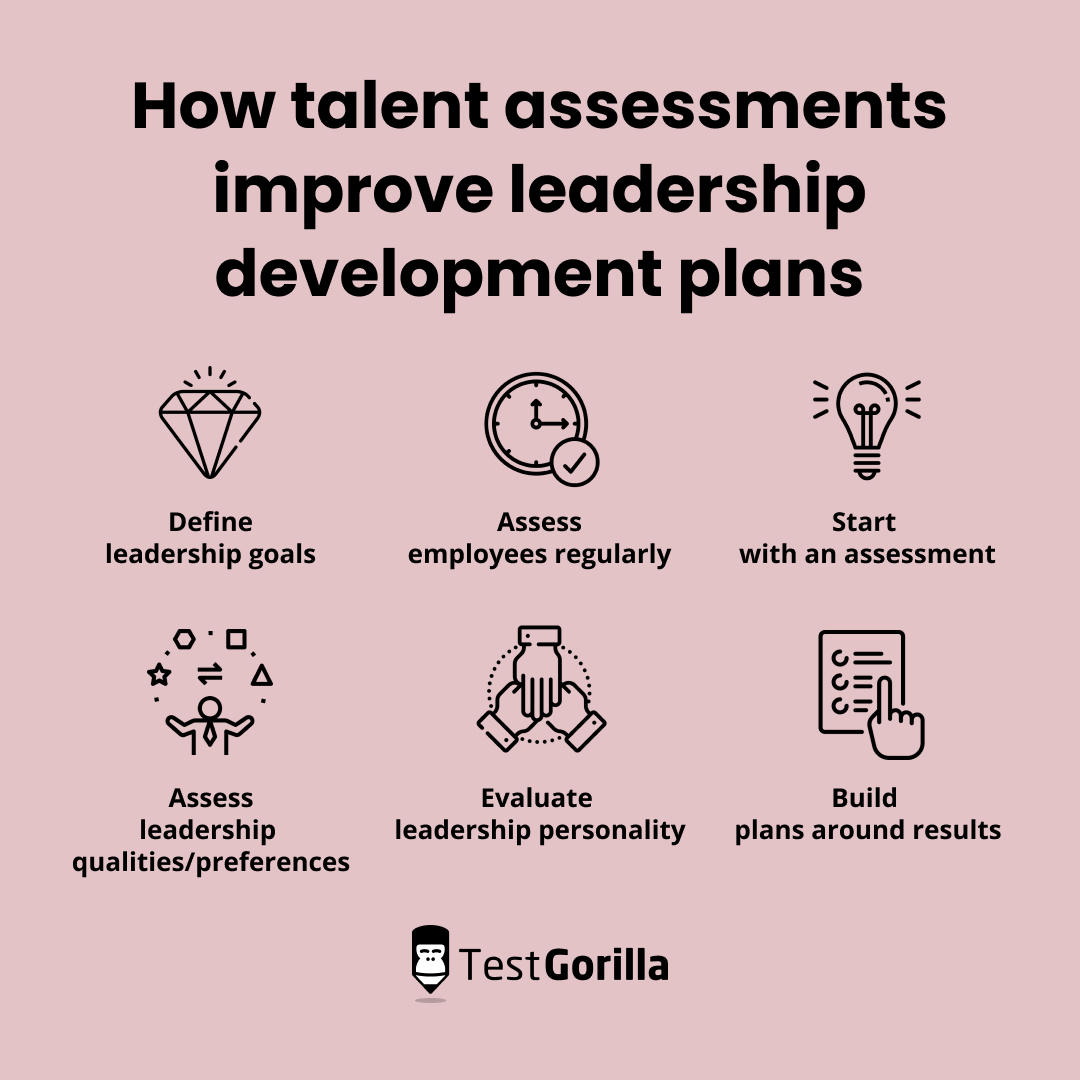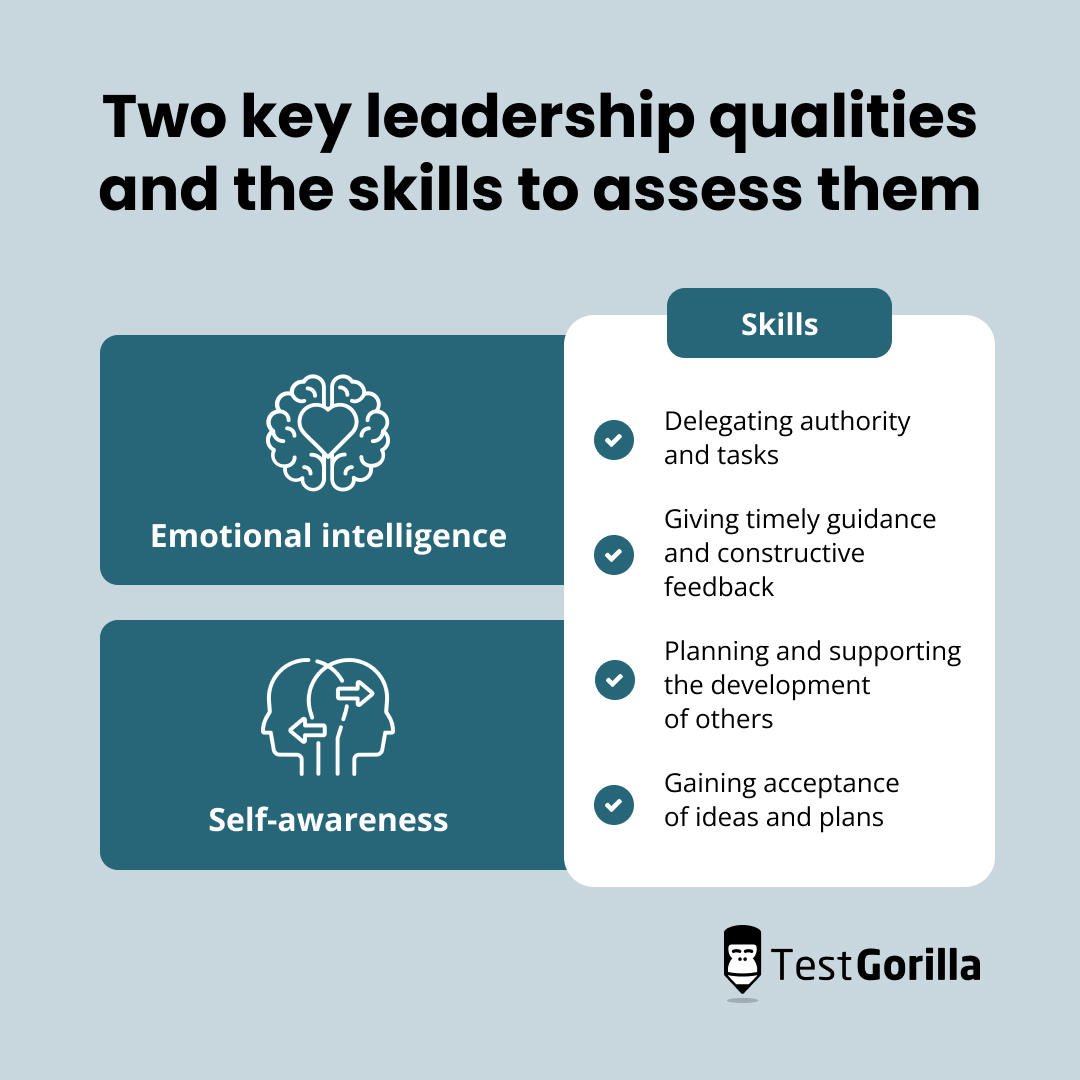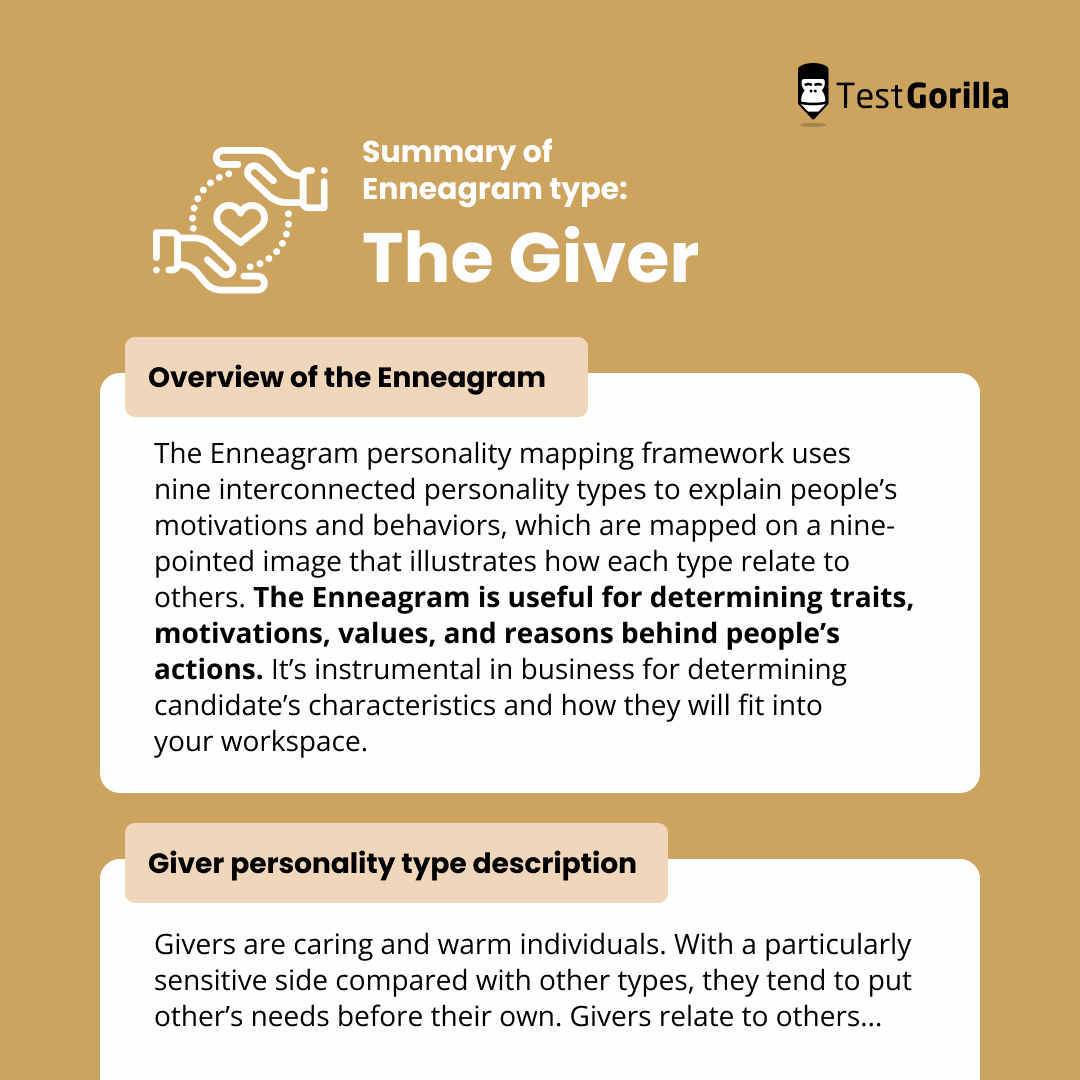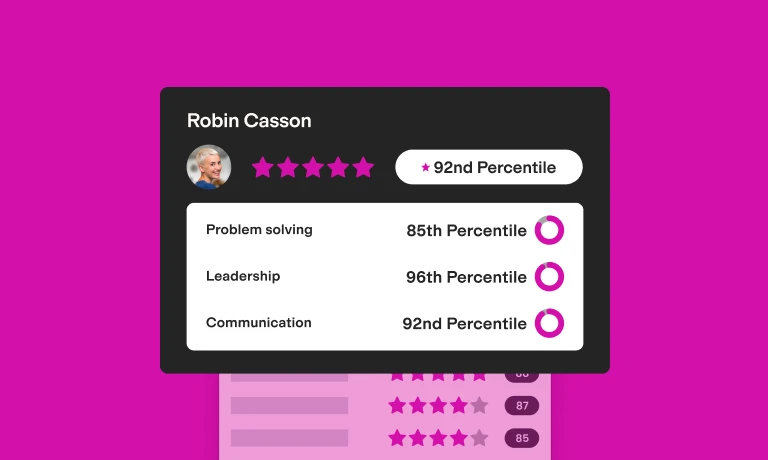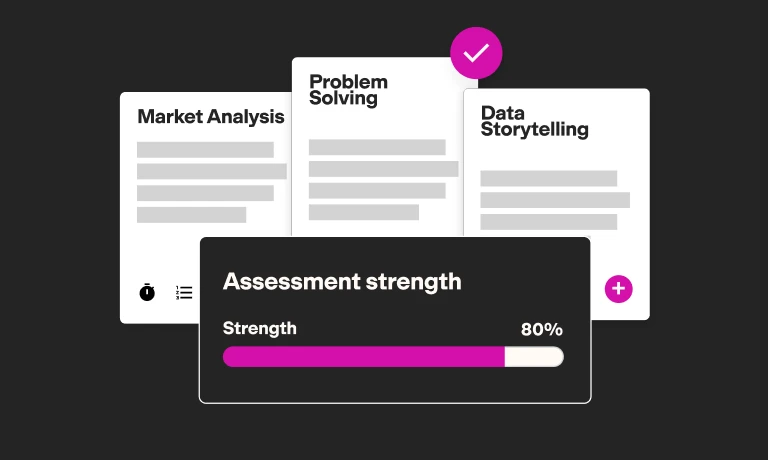Leadership development plans: How talent assessments help nurture future leaders
Future leadership is essential for a company’s continued success and growth.
But current leadership development plans often lack clear objectives, consistency, and ways to measure progress.
Limited budgets, nonexistent learning cultures, and constantly shifting skill sets make creating effective leadership development plans difficult.
Using data-driven, multi-measure talent assessments helps you overcome these challenges to develop your organization’s future leaders.
Whether you’re assessing an employee’s management skills with our Project Management test or using a personality test to assess candidate behavior, talent assessments are a key part of successful leadership development plans.
In this article, we explore what a personal leadership development plan is, the difficulties with leadership planning initiatives, and the different ways to use talent assessments to optimize leadership development planning.
Table of contents
- What is a leadership development plan?
- The difficulties with leadership development planning
- How talent assessments help with leadership development plans
- 6 ways to use talent assessments to optimize development plans for leadership
- Beyond talent assessments: Leadership development template plus 4 best practices to remember
- Use talent assessments to create effective leadership development plans
What is a leadership development plan?
Leadership development plans are strategic roadmaps to identify, support, and nurture leadership skills to put employees on a path to successful management and senior leadership roles.
They are a series of activities, tests, and training opportunities that focus on the important attributes of highly effective leaders and employee engagement.
Leadership development plans are important because they:
Identify management potential
Motivate workers who want to advance their careers
Drive innovation
Increase workplace communication
Boost productivity
Hiring new managers or senior-level employees doesn’t guarantee that you address your organization’s leadership needs.
Successful leadership development plans raise in-house talent to meet the needs and goals of your organization, cut costs, and build a positive workplace culture.
Read our in-depth guide to learn about the benefits of leadership development frameworks.
The difficulties with leadership development planning
Cultivating leadership in your workforce isn’t a walk in the park because it involves continuous learning to create new skill sets and training programs.
Many companies struggle to establish and maintain effective leadership development plans because they lack direction and a clear business strategy. If this sounds familiar, our leadership development statistics provide a deeper look into the challenges and opportunities.
Bringing senior leadership into the process is also difficult without committing to investing the time and resources necessary to build a successful leadership development program.
The difficulties you can face with leadership planning are:
Limited time and budget to invest. Leadership development planning is more than hiring candidates with leadership potential. It requires an investment in a long-term development structure personalized for each employee.
A lack of a learning culture in the workplace. Your plans can’t succeed unless learning and development are a cornerstone of your organizational culture. A learning mindset should be present at every level of your organization to keep your future leaders engaged, supported, and included in decision-making.
Skills needs outpacing development solutions. The skills that businesses need to develop keep changing, making unadaptable leadership development plans ill-equipped to support leaders in the long term.
No remote/hybrid options. With up to 87% of workers embracing remote working, leadership development plans that do not translate remotely struggle to maintain the consistency needed to succeed.
Not enough hard data to measure progress. Measuring leadership is not always a straightforward process. Leadership qualities are a blend of hard and soft skills that you need to track and develop. Leadership development plans that do not have data-driven strategies to monitor and manage employees can’t fully leverage their potential.
The best insights on HR and recruitment, delivered to your inbox.
Biweekly updates. No spam. Unsubscribe any time.
How talent assessments help with leadership development plans
Talent assessments are part of a holistic hiring process that evaluates:
Role-specific skills
Situational judgment
Personality type
Technical skills
Soft skills
They collect valuable data about the test taker to determine whether they have the skills to thrive in a particular role and the personality traits needed to develop into a strong leader.
Talent assessments also boost hiring efficiency by identifying potential leaders quicker than traditional hiring practices.
Identify skills needed for strong leadership
There are several abilities that every leader should have, like empathy, critical thinking, communication skills, and confidence.
Talent assessments, like our Advanced Accounting test, can reveal candidates with impressive hard skills.
But they can also explain how your employees think.
In the book Wheel of Intelligent Leadership, John Mattone defines critical thinking as an essential leadership competency because the quality of leadership always depends on the quality of the leader’s thoughts.
In other words, critical thinking skills determine an individual’s effectiveness as a leader.
Cognitive ability tests, like our Critical Thinking test, evaluate your potential leaders’ deductive reasoning skills, understanding of cause-and-effect relationships, and ability to recognize assumptions.
Improve quality of hire
Talent assessments identify and evaluate high-potential candidates based on their skills, abilities, and motivations to improve the quality of hires.
Reducing employee turnover caused by mis-hires is another main goal.
Our report, The State of Skills-Based Hiring 2022, found that 92.7% of organizations using skills-based hiring reduced the number of mis-hires.
The quality of a hire refers to quantifying the value a new employee creates once they join your organization. It is measured by:
The long-term success of the company
Employee performance
Employee productivity
Employee’s support of their colleagues
Talent assessments identify, evaluate, and track quality candidates and employees who are beneficial to the above categories, like HiPos.
HiPos are high-potential employees who show they have the skills and motivation to advance to leadership roles within your organization.
Eliminate bias
Talent assessments remove bias from your hiring process so you can identify and recruit candidates from diverse backgrounds with leadership potential.
How?
By leveling the playing field with objective tests formulated by subject matter experts instead of bias-prone strategies like degree inflation, resumes, and cover letters.
With talent assessments like TestGorilla’s Culture Add test, you can evaluate candidates based on how their values and behaviors align with your organization.
Each candidate receives the same test with questions in the same order, and recruiters compare their results to elevate top performers.
Identifying and supporting culture add plays a crucial role in diversity hiring, which helps you build a high-performance culture. It empowers your future leaders early on in their careers to challenge the status quo, offer innovative ideas, and participate in decision-making.
Talent assessments also locate leaders with diverse experiences and perspectives rather than singling out conformers who add little to your culture.
Manage and interpret assessment results
Our talent assessments offer comprehensive results for each test taker to identify potential leaders on the main candidate page or explore individual results with our analysis tools.
Results for each assessment are placed in several key areas so you can identify and log candidate assessment details like:
Their performance in each section
Their percentage of culture add
Summaries for scoring benchmarks
Your overall rating
Having in-depth information about your potential leaders optimizes individual leadership development planning and introduces a standard for future leaders to follow as you continue to hire and develop employees.
Promote a culture of learning
Not everyone is a born leader, but that doesn’t mean they can’t learn to become one.
Upskilling your employees through talent assessments is a great way to promote a learning culture.
It establishes learning as a core value, identifies clear paths and milestones from performance measurement, and gives employees insight into the development process.
Cengage Group, for example, enables employees to complete self-evaluations to identify their personal skills gaps and opportunities to improve.
Medicus employees can use a red, yellow, and green metric to self-evaluate and rely on managers and learning specialists to review their progress.
This internal recruitment strategy identifies and develops potential leaders and supports the workforce.
Encouraging employees to evaluate their own performance signals that their growth isn’t just about improving your bottom line. It’s about empowering employees to take ownership of their performance and hard work.
6 ways to use talent assessments to optimize development plans for leadership
Talent assessments are a powerful tool to assess leadership skills and qualities, like their ability to:
Learn and develop themselves and others
Prioritize honesty and integrity
Communicate clearly and effectively
Treat others with respect, especially in difficult situations
Exercise empathy, even when they disagree
Advocate for themselves
Lead by example instead of fear or force
Let’s look at practical ways to use talent assessments for your leadership development plans.
Optimize development plans using talent assessments: At a glance
Ways to use talent assessments | How it works |
Define leadership goals | Use assessment results to determine which skills are missing from your organization and the type of leader needed to fill the gaps. |
Regularly assess employees | Track employee growth and nurture development with regular assessments. |
Start with an assessment | Get hard data about employee skills, abilities, and personality as a starting point. Study their growth trajectory. |
Assess leadership qualities/preferences | Assess leadership qualities and preferences to predict how they lead, not just the skills they have. |
Evaluate leadership personality | Use assessments to find candidates and employees with beneficial personalities for your organization. |
Build plans around results | Avoid bias in hiring and development by focusing on objective data from talent assessments. |
1. Define your leadership development goals and objectives
The first step in strategic planning for leadership development is identifying what leadership skills are already present within your organization.
Conduct a skills-gap analysis to address internal skills gaps and follow best practices to identify which employees have leadership potential.
Ask yourself: What are the top priorities of your organization?
Leadership development planning takes a big-picture approach backed by hard data, analysis, practical steps, and leadership objectives.
Use talent assessments to determine which skills are missing from your organization to identify overarching goals and incorporate them into actionable steps.
For example, “I want employee X to show a 20% score increase on their second Software Engineering Online test.”
Hiring employees who add to your existing culture is an important leadership development goal.
Incorporating diverse talent into your leadership development plans boosts innovation, creativity, and productivity by eliminating groupthink and traditional workplace hierarchies.
Diversity doesn’t just benefit your potential leaders.
According to a 2021 study from McKinsey, organizations with diverse executive leadership earn more in profits.
Once you define your diversity goals and objectives with talent assessments, your leadership development planning can take off.
2. Regularly assess employees with tests to monitor growth
Talent assessments aren’t a one-and-done affair.
They are most effective in your leadership planning when used regularly with other tests to measure growth and avoid unconscious bias.
For example, if you want to see whether an employee in your leadership program has improved their problem-solving skills, give them our Problem-Solving test at the beginning of their journey.
After three months, have them take the test again so you can examine their progress.
3. Kick off leadership development planning with an assessment of your current needs
Communicating with an employee at the beginning of their action plan is a great way to get their perspective on their current skills and how they hope to grow.
But giving them a starting assessment also gives you hard data about their current skills and their competencies, motivations, and personality types.
You can start planning leadership development during new employee onboarding to identify their skills sets and establish a learning culture early on.
Giving tests to your existing workforce at the start of leadership planning offers each employee a path forward because they understand where their strengths are and where they need to improve.
Sleep Number, for example, used talent assessments early on in its development plan for leadership positions to achieve record-breaking sales when the company grappled with the closure of most of its 600+ retail stores.[1]
They didn’t wait to think about development until they needed specific skills. Early on, they created opportunities for employees to grow their skills through learning journeys, team development sessions, and leadership assessments.
4. Assess key leadership qualities and preferences
You can use our Leadership and People Management test to evaluate a candidate’s ability to lead others within your organization using soft skills like persuasion and effective communication.
The test also covers abilities like:
Delegating authority and tasks
Giving timely guidance and constructive feedback
Planning and supporting the development of others
Gaining acceptance of ideas and plans
These skills are closely linked to the leadership qualities Daniel Goleman, a psychologist and author, refers to as:
Emotional intelligence: The ability to recognize, understand, and manage emotions and empathize with others
Self-awareness: The ability to gain knowledge by looking inward at the reasons behind our own actions
A person’s preferences are also important to their leadership development planning because they reveal how candidates and employees make decisions and the lifestyles they gravitate toward.
In short, if you know what someone wants, you can predict how they lead.
Our 16 Types test assesses candidates based on four preferences: extraversion, sensing, thinking, and judgment to determine whether they prefer social interaction over solitude or reality over abstract ideas, for example.
5. Evaluate leadership personality and style
Although there is no such thing as a perfect leadership personality, personality tests can help you identify and evaluate candidates with more beneficial personalities for your organization.
Our Enneagram Personality test, for example, maps out nine different personality types and additional layers or wings that a person can have.
Depending on your organization, a personality Type Nine, for example, may not be the best fit.
Type Nines, also called the Agreeable, can be people-pleasing and conflict-averse. They are great mediators but struggle to exercise authority.
But that doesn’t mean they have a bad personality or leadership style.
Enneagram Type Nines can be highly effective leaders in organizations suffering from a negative workplace culture. Type Nines have a gift for understanding the positions of others and can unite teams by finding common ground.
Evaluating your employees’ personalities gives you an in-depth understanding of how they process emotions in certain situations.
How? By analyzing the results that we deliver in a comprehensive report. Here’s an example from our app of the start of the report that summarizes a Type Two employee’s results.
6. Build leadership development plans around assessment results
Talent assessments are valuable because they identify certain skills and traits and guide an employee’s entire professional development plan.
John was a standout candidate for an open chief operating officer position at a hospital where the existing leadership hoped that he would eventually become the chief executive officer.[1]
But senior leaders at the hospital were experienced enough to know that they needed hard data to identify if John was a good leader and determine exactly how they should proceed with his leadership development strategy.
After taking a talent assessment, it was clear that John needed to become a better leader before stepping into the chief operating officer role. More importantly, John showed that he had potential.
So, the hospital leadership created his leadership development plan around his talent assessment results.
They recommended he build his business acumen through an MBA program and develop his leadership capabilities in strategy and communication as the hospital’s new chief human resources officer.
They also offered John personalized coaching experiences, all guided by his assessment results.
Beyond talent assessments: Leadership development template plus 4 best practices to remember
Talent assessments are integral to your leadership development plans but are not the only tool you can use.
Successful leadership development planning also depends on maintaining a positive workplace culture, creating safe spaces to practice skills and techniques, regularly checking in with employees, and exploring mentorship opportunities.
But before discussing these four best practices, let’s start by providing you with a leadership development template.
Leadership development plan template
The five main components of a leadership development plan are:
Component | How it works |
Developmental goal | Identify leadership strengths, weaknesses, opportunities, and challenges to pinpoint what you want your employee to learn and achieve |
Step-by-step plan | Turn long-term goals into actionable objectives to make them more manageable and squeeze the most out of your time |
Resources | Discuss the resources you need to achieve your plan, like your budget, tools, training platforms, and hours you want to dedicate to the project |
Priority | Leadership development plans are most effective when each step is prioritized to maximize efficiency and stay on track |
Timeline | Establish a timeline of when you would like to hit certain benchmarks and account for non-leadership-related developmental tasks that take extra time and resources |
Now we’re ready to look at the best practices:
1. Maintain a positive workplace culture
Teaching your employees how to become effective leaders should not be a stressful or grueling process.
Ensuring your leaders have a positive developmental experience means creating a positive workplace culture.
Ask yourself the hard questions:
Does my current organizational culture create a friendly working environment for everyone or just a select few?
How do managers treat their team members?
Is there room for everyone to develop?
Are my employees engaged at work?
Ask your employees:
What makes you feel fulfilled?
Do you have a healthy work-life balance?
How do you like to be recognized for your work?
Creating a positive workplace culture gives your employees every opportunity to succeed.
It teaches them how to build a positive workplace culture when they end up shepherding other future leaders.
2. Create safe spaces to practice skills and techniques
Exercising and perfecting leadership skills is not a private endeavor. To be effective, leadership needs the participation of other people.
That’s why it’s important to create safe spaces for your future leaders to work on their leadership skills, whether in coaching sessions, group exercises, or behavioral interviews.
Keep in mind safe spaces should be away from live projects and areas where initial mistakes could damage productivity or self-confidence.
Consider creating role-play scenarios and using technology to create hypothetical scenarios so employees can practice power skills.
3. Check in regularly with your future leaders
Never assume your leadership development plan is succeeding because you haven’t heard otherwise.
Actively seek your future leaders’ feedback about your leadership development plan.
Similar to creating a positive workplace culture, ask your employees how they are experiencing their leadership development plans to identify areas where management can improve.
Checking in with future leaders throughout their leadership development plans is crucial to healthy workplace communication.
Leadership development planning does not aim to preserve rigid hierarchies or bombard future leaders with excessive information. Make sure your workplace communication reflects that.
4. Consider reverse-mentoring opportunities
Reverse mentoring is an effective leadership training tool because you immediately involve your junior employees in decision-making roles.
Reverse mentorship flips the traditional mentorship model by putting lower-level employees in mentorship roles with senior-level employees.
Not only does this empower your future leaders, but it also keeps your existing leaders in a development mindset because you introduce them to fresh perspectives from their reverse mentors.
Reverse mentoring builds future leaders’ confidence, improves their performance, and grows their senior-level networks, exposing them to a wider community of successful leaders.
Use talent assessments to create effective leadership development plans
Leadership development planning is an important part of your broader employee training and development strategy to help your business succeed well into the future.
Creating effective leadership development plans can be difficult without the proper investment of time and resources, a strong learning culture, and hard data to measure progress.
Luckily, talent assessments identify leadership skills, improve the quality of hires, eliminate bias, and promote a learning culture.
Beyond talent assessments, strategies like maintaining a positive workplace culture, communicating regularly with your future leaders, and experimenting with effective strategies like reverse mentoring can elevate your leadership development planning.
Explore our test library to learn how different talent assessments can help you build successful leadership development plans.
Sources
Burke, Maddie. (July 28, 2022). “Leadership Matters”. Twin Cities Business. Retrieved July 25, 2023. https://tcbmag.com/leadership-matters/
Court, Bruce. (November 16, 2022). “Why Do a Leadership Assessment?”., DDI. Retrieved July 25, 2023. https://www.ddiworld.com/blog/why-do-a-leadership-assessment
You've scrolled this far
Why not try TestGorilla for free, and see what happens when you put skills first.


